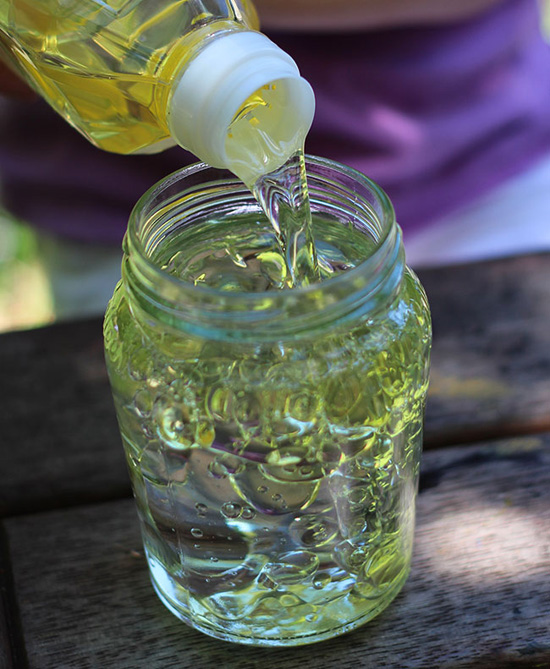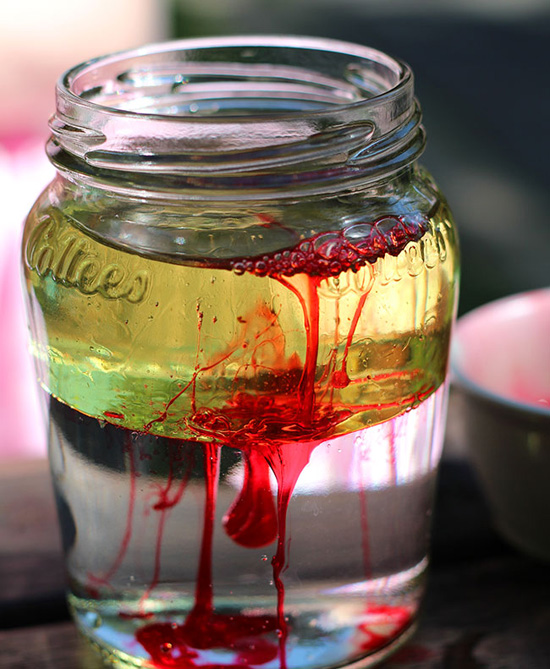You will need: Glass jam jars (with secure lids if you want to shake them), Jug of water, Vegetable oil, Dishwashing detergent, Food colouring, Small container (as many as you have colours - we used 3), Syringes or pipettes, Optional: Table salt
1. Pour water into your jar, until it is about 3/4 full.
2. Pour vegetable oil on top of the water to fill the rest of the jar (you need space to put on the lid).
3. Watch what happens. Does the oil mix with the water? Screw the lid onto the jar and shake it…. can you make the oil and water mix? For children learning about density this is a great time to ask, “Is the vegetable oil more or less dense than the water?”

4. Mix a squirt of washing up liquid with some food colouring in a small container.
5. Using a dropper or a syringe squirt (a little at a time, great for fine motor skills) some of the coloured liquid into your jar with oil and water in.
6. Watch what happens….. you should see a lava lamp like affect with bubbles of colour falling through the mixture. Repeat this progress as many times as you like (we used different primary colours to practise colour mixing too - so blue and red, red and yellow etc)

7. If you would like to see a different reaction try pouring a teaspoon of salt into the mixture and watch what happens.
Whats happening? There are a lot of interesting things to see. Firstly oil and water do not mix. Even if you shake the jar the oil will immediately separate from the water as soon as it settles. Oil is attracted to other oil so it sticks together. The same goes for water….. so they just don’t mix – they are immiscible.
Secondly, the oil always floats on top of the water because the oil has a lower density than water.
Detergent is different again. It is attracted to both water and oil. Detergent grabs onto both causing oil droplets to be suspended in the water. When you shake the jar the detergent molecules stick the water and oil together. That's why detergent is so handy for cleaning greasy dishes!



